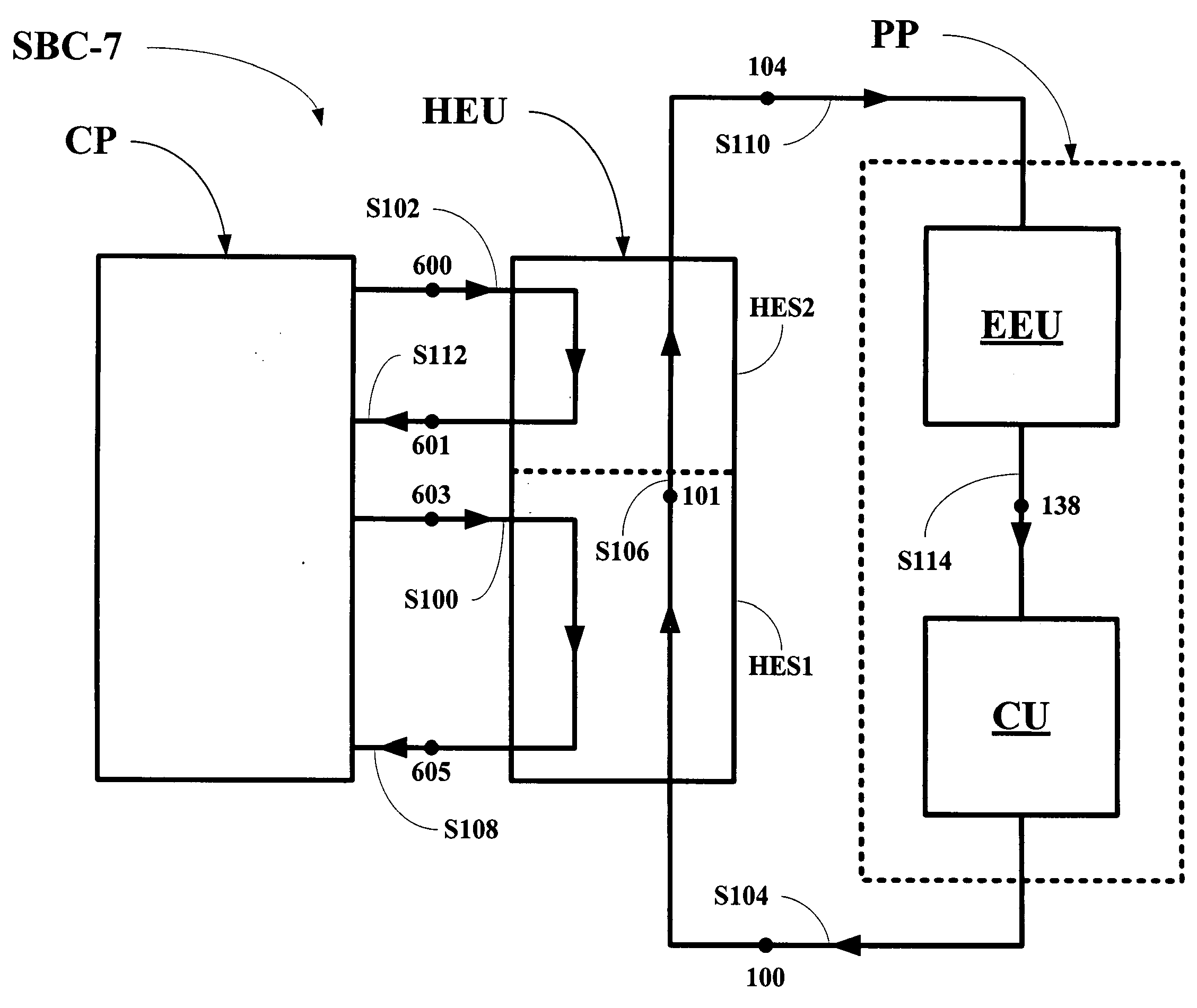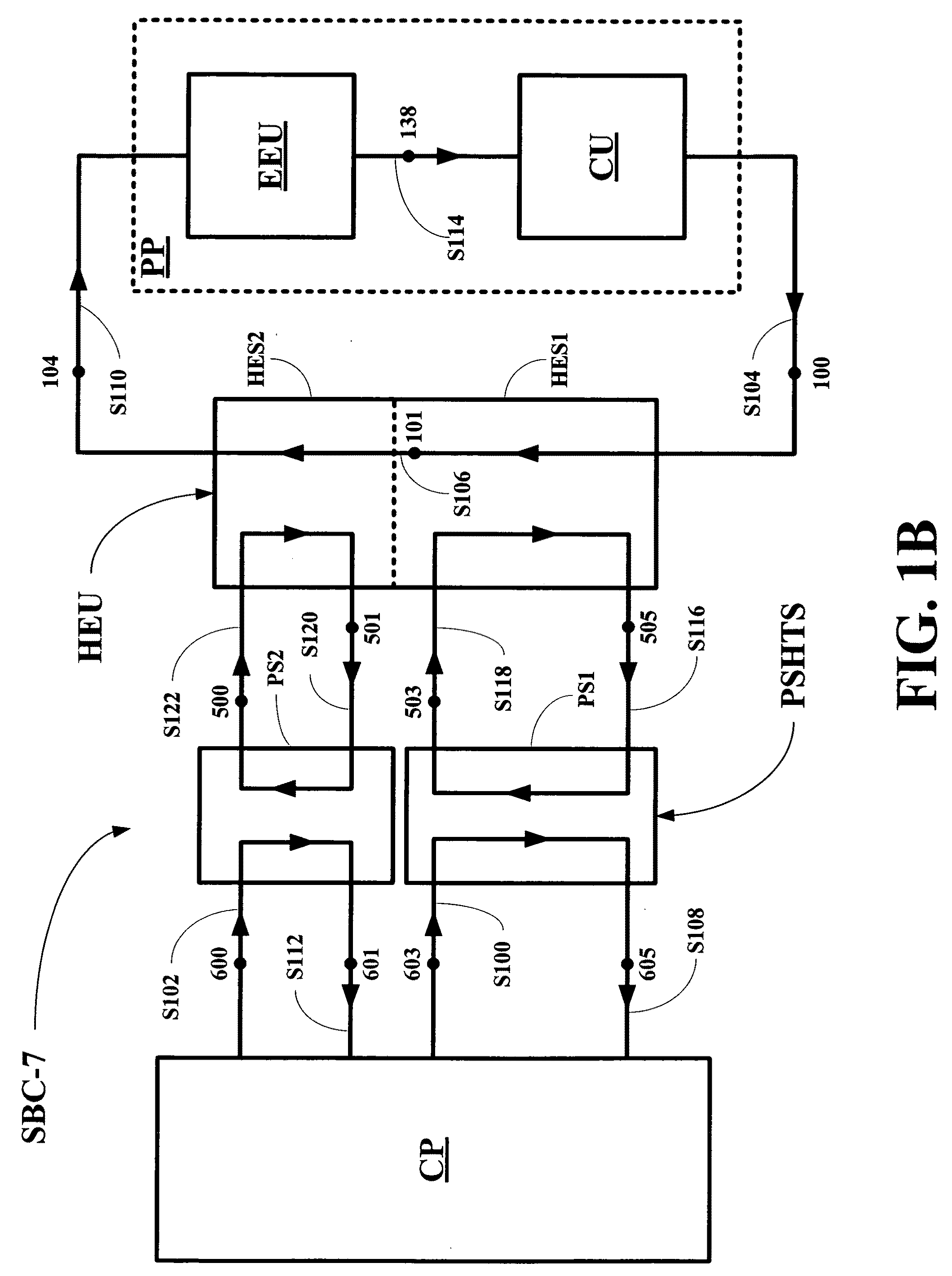Method and system for converting waste heat from cement plant into a usable form of energy
a technology of waste heat and energy, which is applied in the direction of steam generation using hot heat carriers, machines/engines, mechanical equipment, etc., can solve the problem of limiting the final temperatur
- Summary
- Abstract
- Description
- Claims
- Application Information
AI Technical Summary
Benefits of technology
Problems solved by technology
Method used
Image
Examples
embodiment
FIG. 1A Embodiment
[0044]Referring now to FIG. 1A, an embodiment of a system of this invention, generally SBC-7, is shown to include a cement plant CP, a heat exchange unit HEU, and a power plant PP. The cement plant CP produces two heat sources stream, a hot air stream S100 having parameters as at a point 603 and a flue gas stream S102 having parameters as at a point 600.
[0045]The hot air stream S100 having the parameters as at the point 603 passes through a first stage HES1 of the heat exchange unit HEU in counterflow with a fully condensed, multi-component working fluid stream S104 having parameters as at a point 100 in a first heat exchange process 603-605 or 100-101. The stream S104 having the parameters as at the point 100 is partially vaporized to form a partially vaporized working fluid stream S106 having parameters as at a point 101 and a cooled air stream S108 having parameters as at a point 605.
[0046]The flue gas stream S102 having the parameters as at the point 600 passes...
##s embodiment
FIG. 3A PSHTS Embodiment
[0074]Referring now to FIG. 3A, the hot air stream S100 having parameters as at a point 603 or the flue gas stream S102 having the parameters as at the point 600 from the cement plant CP passes through the cyclone separator C, where large particles of dust are separated from the hot air stream S100 having the parameters as at the point 603 or the flue gas stream S102 having the parameters as at the point 600 by centripetal forces to form a partially cleaned hot air stream S136 having parameters as at a point 612 or a partially cleaned flue gas stream S138 having parameters as at a point 610. One experienced in the art can easily select a proper type and design of the cyclone separator C for this purpose.
[0075]Thereafter, the partially cleaned hot air stream S136 having the parameters as at the point 612 or the partially cleaned flue gas stream S138 having parameters as at a point 610, still carrying a substantial quantity of dust, is sent into a bottom port 2...
PUM
| Property | Measurement | Unit |
|---|---|---|
| thermal energy | aaaaa | aaaaa |
| temperature | aaaaa | aaaaa |
| energy | aaaaa | aaaaa |
Abstract
Description
Claims
Application Information
 Login to View More
Login to View More - R&D
- Intellectual Property
- Life Sciences
- Materials
- Tech Scout
- Unparalleled Data Quality
- Higher Quality Content
- 60% Fewer Hallucinations
Browse by: Latest US Patents, China's latest patents, Technical Efficacy Thesaurus, Application Domain, Technology Topic, Popular Technical Reports.
© 2025 PatSnap. All rights reserved.Legal|Privacy policy|Modern Slavery Act Transparency Statement|Sitemap|About US| Contact US: help@patsnap.com



